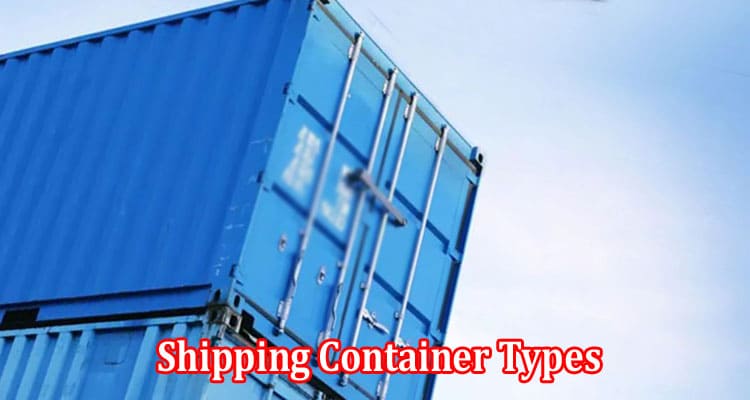Have you ever wondered about the big metal crates floating over the seas or driving down highways? They’re not just ordinary boxes; they’re shipping containers of different kinds.
Each container has a distinct tale, from the large ones carrying massive freight to the specialized ones created for one-of-a-kind items. This guide will walk you through the 10 various types of shipping containers.
1. The Standard Container: A Global Nomad
You’ve most likely seen those identical metal boxes on ships, vehicles, and trains. These conventional shipping containers serve as the foundation of global trade. But what is their appeal, and how do they carry almost anything?
Standard Shipping Containers, sometimes known as dry vans, are available in set sizes of 20 or 40 feet. Because of this standardization, they are simple to load, stack, and carry, making them the favored choice for shipping a wide range of goods globally.
The SCF 20ft shipping containers are a wonderful example of this. These dependable containers are well-known in global trade for their efficiency and security, guaranteeing that your items arrive safely.
2. Refrigerated Containers: Freshness at Sea
What if you’re transporting items that need to be kept chilled, such as fruits and vegetables or medicines? Refrigerated Containers (reefers) come into play. They function as mini-fridges on the high seas, keeping perishable goods fresh during the voyage.
Reefers include temperature-controlled chilling systems that ensure your ice cream or medicine arrives just as it left.
3. Open-Top Containers: Sky’s the Limit
What if you need to ship something too tall for a regular container? Open-top containers come in handy in this situation. Because they have no fixed roof, these containers are ideal for loading big or irregularly shaped products.
Open-top containers are a flexible transportation solution for industries with heavy gear or unusual freight.
4. Flat Rack Containers: Load Big, Ship Smart
Isn’t shipping heavy gear or boats difficult? Not with Flat Rack Containers. The collapsible edges of these containers make loading and unloading heavy, bulky things a breeze.
Flat racks provide a solid platform for objects that will not fit into a regular container and ensure secure transit of big cargo.
5. Tank Containers: Liquid Logistics
Have you ever wondered how liquids such as chemicals or food are carried across oceans? Tank Containers (tanktainers) are custom-made for this liquid adventure.
These containers resemble cylindrical tanks on a frame, ensuring that liquids, chemicals, or your favorite fruit juice travel spill-free.
6. Ventilated Containers: Fresh Air for Cargo
Certain foods, such as fruits and vegetables, require some oxygen. This is when Ventilated Containers come into play. With specifically constructed apertures, these containers allow air to circulate, keeping the cargo fresh.
Ventilated containers are required when transporting products that require some “breathing room” throughout their travel.
7. Insulated Containers: Not Too Hot, Not Too Cold
Reefers are fantastic for keeping things cool, but what if you want to protect products from excessive heat without freezing them? Insulated containers provide a controlled atmosphere that protects objects from harsh weather conditions.
Insulated containers guarantee that things, from electronics to pharmaceuticals, remain within a set temperature range during their journey.
8. Double-Door Containers: Twice the Convenience
Consider loading products from both sides of a container—sounds difficult, doesn’t it? Not in the case of double-door containers. These containers have openings on both ends, making accessing cargo from either side simple.
When it comes to loading and unloading products that are difficult to manage in a limited location, double-door containers are a game changer.
Possibilities Other Than Shipping
Beyond global trade, shipping containers are being transformed into eco-friendly homes, offices, and innovative public spaces. With their adaptability and potential in transportation and construction, these steel titans can help design a more sustainable future.




